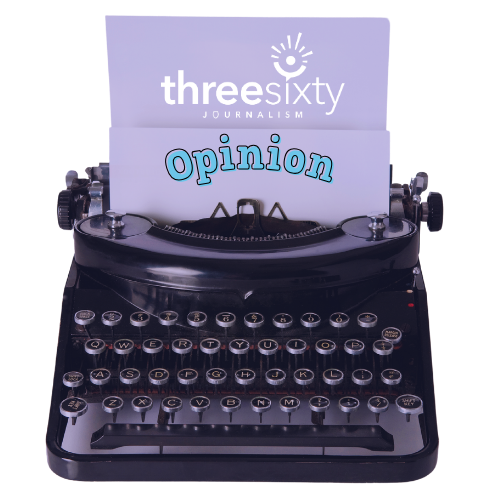 Muniratu Shaibu is a senior at South High School in Minneapolis.
Muniratu Shaibu is a senior at South High School in Minneapolis.
By Muniratu Shaibu
As a resident of Minnesota, I grew up surrounded by Somali culture. A community with great presence and as of 2021, making up around 86,000 of Minnesota’s residents, continuing to be the main contributor to the high Muslim population. Yet I’d often faced questions about my identity and my “Muslimness.”
It’s known that Minnesota is home to a high immigrant population, many of whom came from Africa. As of 2024, there is still little data about the African immigrant population. Worse, when the identities of Muslim and West African or Black intersect, data from even within the past four years is scarce. As of 2022, Minnesota consisted of 146,532 African immigrants, being of various cultures. Liberia and Nigeria are top of the list as of West Africa.
My mother instilled culture and faith into me and I’ve never questioned my identity. I’m a Togolese Muslim girl. A hijabi, from West Africa, and have never hesitated to share any part of this with people. Amongst gratitude, I realize it’s a privilege to know my mother tongue and have access to our clothing and food that I share proudly.
However, the moment the words, “I’m not Somali,” leave my mouth, I morph into a walking contradiction. I’d receive questions such as, “Are you actually Muslim?”, “Do you pray five times a day?” and much more.
Of course I’d receive questions from non-Muslims, relaying the experiences of every Muslim they met, being Somali. I figured early on, people must’ve assumed these two identities were synonymous. However, most of these questions came from fellow Muslims, usually Somali, and it stung even more.
One thing must be clear, Somali doesn’t mean Muslim. These two identities just intersect often. Over 95% of the Somali population, no matter the region, are also Muslim.
As a Togolese, it stings when people haven’t heard of my country and go on to dismiss my Islam as if Muslims from my side of the continent don’t exist. Black Muslims as a group have always been present in the United States due to the brutal slave trade over 400 years ago. Though stripped of their culture, faith remained intact. Whether their ancestors were enslaved or they’re children of immigrants like me, Black Muslims come from various countries -Senegal, Gambia, Sierra Leone, and more.
How would I begin to explain, melanated skin and a hijab didn’t mean Somali. It didn’t mean I called my mom ‘hooyo’, wore diraacs and clapped along habos at the buraanbuur circle. How would I explain, Somali and Muslim, could be separated from one another. I was a walking contradiction to both Black Americans and Somali Americans, belonging with neither group.
Why was I constantly questioned by those with the same hijab on their head, quizzing me on our religion?
Somali Americans were the only sense of Muslim community I saw, yet felt so out of touch from. This is a universal experience for most, if not all West African Muslims. It shouldn’t be the case though; Muslims don’t share one image. We are diverse.
I noticed a shift during freshman year of high school when I met an Indonesian Muslim, Farisa Wafiqa, who became a dear friend. I spoke with her about the experience of being the “outlier” in Muslim spaces.
People would often be confused by Farisa’s identity as a child, possibly because she wasn’t always a hijabi. Questions like “Are you Somali?” were met with an immediate “Wait, didn’t you just say you’re Muslim?”. Farisa would clarify she was Indonesian, yet many didn’t know of Indonesia, consisting of the nation’s highest Muslim population. Meeting a fellow Muslim, hesitant to join religious spaces, such as the school Muslim Student Association, made me feel seen. We related upon the fact that there wasn’t an identity-based space geared towards us.
Together, we connected with Somali Muslim students who also saw their identity through a lens of intersectionality, shifting our reality.
My friend Amal Abdi shared how the increasing presence of her Somali community in the Twin Cities impacted her. As a child, she “felt more alone and felt like no one could relate to me.” Though Amal and I share the same overarching identity of Black and Muslim, it doesn’t mean we share the same blackness. What Amal highlighted was the power of being seen. To know you’re not alienated for your differences builds stronger Black and Muslim communities.
To be surrounded by people who share your religion as well as culture and race is sacred, something many Muslims don’t have access to, in Minnesota.
Some argue that it doesn’t matter to distinguish our ethnic culture from one another because we’re simply one ummah.
Simultaneously though, we’re encouraged to seek community in one another & celebrate our uniqueness as long as they follow the sunnah. Allah (swt) created us with variety, so we appreciate one another.
I, alongside many others, need people to leave space for my cultural background, instead of assuming right away.
Questions that invite education on my intersectionality, actively make space for my whole identity. I appreciate it when people ask where I’m from or what language I spoke on the phone with my mother. There will still be the bamboozled faces when I clarify I’m not Somali, or the confusion creeping on my face when people switch to full Somali. But surrounding myself with (Black) Muslims who understand intersectionality means I’m seen.
To understand intersectionality is understanding oneself and those in your neighboring communities. How can we refuse what will only benefit us?

Muniratu worked with University of Minnesota-Center for Writing Consultant Tala Kim and Sahan Journal Community Engagement Manager Hannah Ihekoronye to complete her story. This story was produced as part of ThreeSixty Journalism’s 2024 Op-Ed Workshop for high school youth in partnership with Sahan Journal and the Minnesota Star Tribune.
